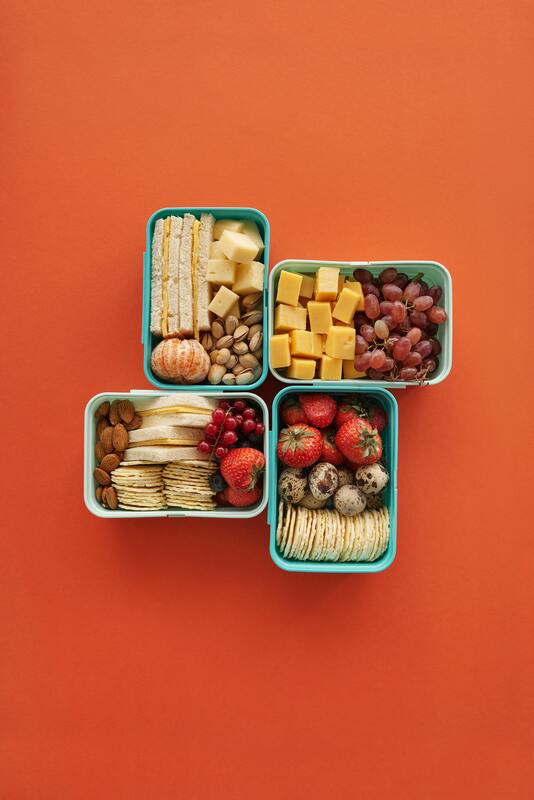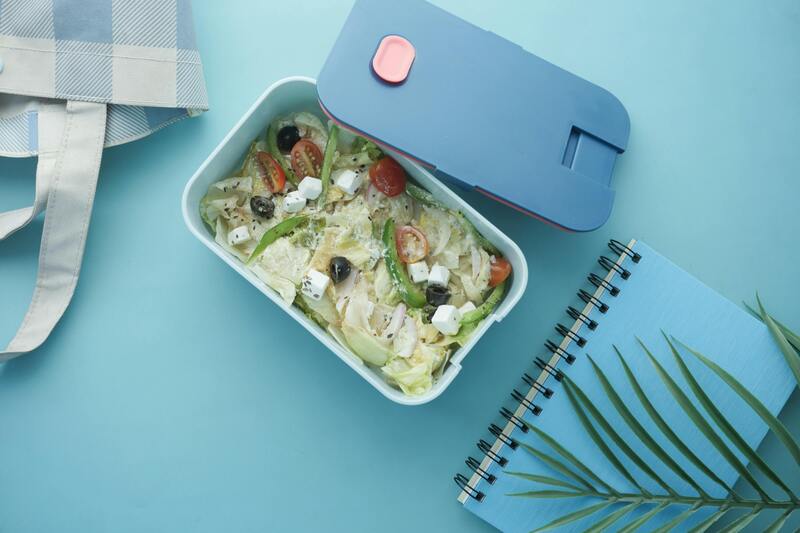1. Types of Lunch Boxes
Lunch boxes come in tons of styles for everyone:
a. Bento Boxes
These have different sections for your food.
Keeps your sandwich from touching your fruit!
Great for packing a balanced lunch with a snack, main dish, and something healthy.
b. Thermos/Insulated Boxes
Keeps stuff hot or cold for hours.
Perfect for soup, pasta, or leftovers.
Usually made with a strong stainless steel inside.
c. Stackable Boxes
These have layers for different foods.
You can keep your chips dry and your dip separate.
Small enough to fit in your bag.
d. Cooler Boxes
These are insulated and keep stuff super cold.
Add some ice packs to keep food fresh.
Good for road trips or picnics.
e. Flexible Lunch Bags
Lightweight, usually made of cloth.
Folds up when you're done.
Not super protective, but good for everyday stuff.
2. Materials
What it's made of matters for how long it lasts, how heavy it is, how safe it is, and how easy it is to clean.
a. Plastic
Lightweight, cheap, and often doesn't have that BPA stuff.
Can get stained or smelly from some foods.
Some plastics are microwave-safe for heating things up.
b. Stainless Steel
Lasts a long time and doesn't hold smells or stains.
Safe to use and will last a while.
Usually not for the microwave.
c. Glass
Safe, doesn't mess with the taste of your food.
Heavy and can break, so be careful.
Often has a silicone cover to protect it.
d. Silicone
Flexible, folds up, and can handle heat.
Great if you don't have a lot of space.
Easy to clean and safe for the microwave.
e. Fabric
Usually for soft lunch bags.
Light and folds easily.
Needs a liner inside to keep it clean.
3. What to Look For
a. Leak-Proof
Really important for soup or yogurt!
Look for tight lids with rubber seals.
b. Sections
Keeps different foods from mixing together.
Good for balanced meals.
c. Insulation
Keeps food hot or cold for a few hours.
The insulated stuff works best.
d. Easy to Carry
Light, small, and easy to grab.
Handles or straps are a plus.
e. Safe for Microwave, Freezer, and Dishwasher
Microwave-safe for heating up food.
Freezer-safe for keeping stuff cold.
Dishwasher-safe for easy cleanup.
f. Good for the Planet
Reusable stuff is better for the environment.
4. Sizes
Small (1-2 cups): For snacks or kids' lunches.
Medium (2-3 cups): For a regular adult lunch.
Large (4-6 cups): For lots of food, long trips, or if you're really hungry.
Stackable boxes let you add or take away layers.
5. How to Clean It
Wash it right away to avoid stains or smells.
Use gentle soap.
For stainless steel, baking soda can help with smells.
Silicone and plastic can go in the dishwasher if they're safe.
Don't soak it for too long, especially if it has metal parts.
6. Be Careful
Make sure it doesn't have BPA and is safe for food.
Don't keep sour foods in metal for too long.
Check the seals so it doesn't leak.
Don't heat plastic that's not made for the microwave.
7. How to Pick the Right One
Think about what you're packing: Hot, cold, or both?
How long is your trip? Longer trips need better insulation.
Do you have much space? Get a collapsible or stackable one.
How heavy is it? Steel is strong but heavy; plastic is light but not as strong.
How easy is it to clean? Dishwasher-safe saves time.
Do you care about the environment? Choose reusable stuff.
8. Extras
Ice packs to keep food cold.
Small containers for sauces.
Forks and spoons that fit in the box.
Insulated bags for extra warmth or coolness.
Lunch boxes are handy! Picking the right one depends on what you need and what you like. If you take care of it, a good lunch box can last for years.
Lunch boxes come in tons of styles for everyone:
a. Bento Boxes
These have different sections for your food.
Keeps your sandwich from touching your fruit!
Great for packing a balanced lunch with a snack, main dish, and something healthy.
b. Thermos/Insulated Boxes
Keeps stuff hot or cold for hours.
Perfect for soup, pasta, or leftovers.
Usually made with a strong stainless steel inside.
c. Stackable Boxes
These have layers for different foods.
You can keep your chips dry and your dip separate.
Small enough to fit in your bag.
d. Cooler Boxes
These are insulated and keep stuff super cold.
Add some ice packs to keep food fresh.
Good for road trips or picnics.
e. Flexible Lunch Bags
Lightweight, usually made of cloth.
Folds up when you're done.
Not super protective, but good for everyday stuff.
2. Materials
What it's made of matters for how long it lasts, how heavy it is, how safe it is, and how easy it is to clean.
a. Plastic
Lightweight, cheap, and often doesn't have that BPA stuff.
Can get stained or smelly from some foods.
Some plastics are microwave-safe for heating things up.
b. Stainless Steel
Lasts a long time and doesn't hold smells or stains.
Safe to use and will last a while.
Usually not for the microwave.
c. Glass
Safe, doesn't mess with the taste of your food.
Heavy and can break, so be careful.
Often has a silicone cover to protect it.
d. Silicone
Flexible, folds up, and can handle heat.
Great if you don't have a lot of space.
Easy to clean and safe for the microwave.
e. Fabric
Usually for soft lunch bags.
Light and folds easily.
Needs a liner inside to keep it clean.
3. What to Look For
a. Leak-Proof
Really important for soup or yogurt!
Look for tight lids with rubber seals.
b. Sections
Keeps different foods from mixing together.
Good for balanced meals.
c. Insulation
Keeps food hot or cold for a few hours.
The insulated stuff works best.
d. Easy to Carry
Light, small, and easy to grab.
Handles or straps are a plus.
e. Safe for Microwave, Freezer, and Dishwasher
Microwave-safe for heating up food.
Freezer-safe for keeping stuff cold.
Dishwasher-safe for easy cleanup.
f. Good for the Planet
Reusable stuff is better for the environment.
4. Sizes
Small (1-2 cups): For snacks or kids' lunches.
Medium (2-3 cups): For a regular adult lunch.
Large (4-6 cups): For lots of food, long trips, or if you're really hungry.
Stackable boxes let you add or take away layers.
5. How to Clean It
Wash it right away to avoid stains or smells.
Use gentle soap.
For stainless steel, baking soda can help with smells.
Silicone and plastic can go in the dishwasher if they're safe.
Don't soak it for too long, especially if it has metal parts.
6. Be Careful
Make sure it doesn't have BPA and is safe for food.
Don't keep sour foods in metal for too long.
Check the seals so it doesn't leak.
Don't heat plastic that's not made for the microwave.
7. How to Pick the Right One
Think about what you're packing: Hot, cold, or both?
How long is your trip? Longer trips need better insulation.
Do you have much space? Get a collapsible or stackable one.
How heavy is it? Steel is strong but heavy; plastic is light but not as strong.
How easy is it to clean? Dishwasher-safe saves time.
Do you care about the environment? Choose reusable stuff.
8. Extras
Ice packs to keep food cold.
Small containers for sauces.
Forks and spoons that fit in the box.
Insulated bags for extra warmth or coolness.
Lunch boxes are handy! Picking the right one depends on what you need and what you like. If you take care of it, a good lunch box can last for years.



